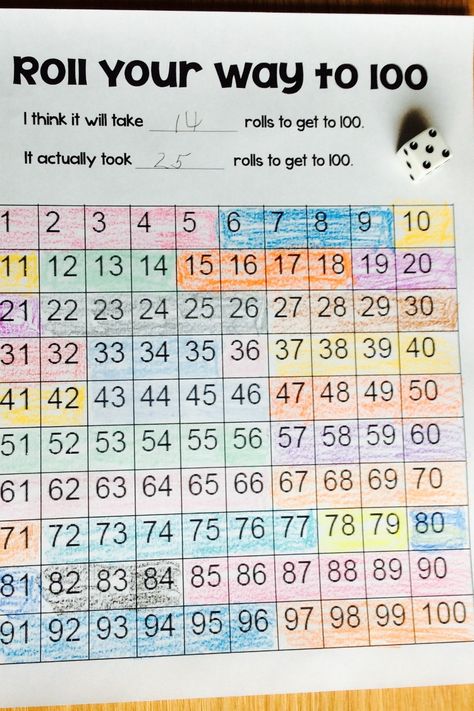
by California Casualty | Educators |
In our world of constant communication, it’s easy to be distracted from really listening to someone. Yet good listening skills take us far—in the classroom and beyond. Good listening skills build relationships and resolve conflicts. They help students learn, and help all of us make fewer mistakes and waste less time.
As teachers, we understand that listening is an important soft skill, but we may not teach it. Here’s why you should, along with some guidance on how to improve listening skills for you and your students.
Active vs. Passive Listening
It’s easy to be a passive listener. That’s listening as we multitask. As passive listeners, we divide our attention between listening and doing something else. That does not benefit us as teachers or students. Rather, active listening – focusing all of our attention on receiving and processing information – helps us to fully understand what is being communicated.
Active listening helps students:
-
- Follow directions
- Understand expectations
- Spend more time on task
- Connect to content and increase understanding
Active listening helps educators:
-
- Better understand student needs
- Provide meaningful feedback
- More fully engage students
- Communicate well with parents, peers, and the administration
How to Teach Active Listening
It feels good when someone is actively listening to you. Demonstrate that to your students by modeling two conversations – one with active listening and one with passive. Discuss the importance of active listening. Then, walk them through the process of how to be an active listener together.
To be an active listener you need to…
1. Focus.
It’s easy to be distracted by the things in our environment, from our phones and devices to other people and happenings around us. To be a really good listener, you have to focus solely on the person talking to you.
Don’t multi-task, look around, or think about things you need to do.
Do give the speaker your undivided attention. Put aside your phone, papers, or any potential distractions. Face the speaker and maintain eye contact. Be present in the moment.
2. Receive.
The best listeners are those who are receptive to new information. You need to be ready to receive a message in order to listen. Importantly, good listeners are not critical. They create a safe environment where others may share their thoughts.
Don’t be judgmental. Don’t engage in a conversation if you’re not ready to listen.
Let go of your opinions during the conversation. Listening does not mean you agree with the message, only that you respect another’s right to express it.
3. Visualize.
As the saying goes, a picture is worth a thousand words. That’s why it’s helpful to visualize what the other person is saying. In addition, knowing the speaker’s emotional state will help you more fully understand what he or she is trying to communicate.
Don’t assume you know what the speaker is saying or feeling.
Do listen to the words and picture what the speaker is saying. Pay attention to the speaker’s nonverbal cues, from body language to the tone of his or her voice. Try to feel what the speaker is feeling.
4. Wait.
It’s tempting to interrupt a speaker and impose your thoughts or solutions right away—especially if he or she says something that relates to your life. It’s easy to get sidetracked but that’s not good listening. We all think and talk at different rates. Let the other person have a chance to speak.
Don’t interrupt or jump in with your own thoughts or questions. Don’t finish the other person’s sentences. Don’t sidetrack the conversation by starting a new, related or unrelated conversation.
Be patient. At first, it might be hard to simply wait. With practice, it will get easier.
5. Understand.
Eventually, you’ll want to ask a question or two. Questions show that you are listening and that you want to understand what the speaker is saying. Your goal is empathy—to feel what the speaker is feeling. Empathy creates a connection like nothing else does.
Don’t spend the time planning what to say next. It will distract you from what’s being said.
Do wait until the speaker pauses to ask questions to clarify the message. You can say something along the lines of “Can we back up for a moment? I have a question about …”
6. Respond.
You do not have to be perfectly silent or still in the listening role. Good listeners consistently provide feedback whether it’s a word of confirmation or a nod of agreement.
Don’t just sit there or zone out, even if you’re bored.
Do nod and show your understanding through appropriate facial expressions. Interject with a well-timed “hmm” or another simple statement that confirms the message the speaker is sharing.
7. Summarize
You will want to ensure that you correctly understood the message. At the end of the conversation, try telling the speaker what you heard.
Don’t make a long summary statement. The purpose is not to capture every detail but merely the essence of the message.
Do let the speaker know that this is what you understood and ask for clarification if it is wrong. If there’s follow-up to the conversation needed, now is the time to mention the next steps.
Practicing Active Listening
Active listening takes practice. Model good listening skills and call attention to them as you are doing them. Involve students in the process regularly with active listening activities. Examples include:
-
- Partner conversations
- Journal entries following a lesson or other presentation
- Listen and draw a story
- Outdoor sound scavenger hunt
- Mindful listening meditations
This article is furnished by California Casualty, providing auto and home insurance to educators, law enforcement officers, firefighters, and nurses. Get a quote at 1.866.704.8614 or www.calcas.com.

by California Casualty | Educators |
Our Education Blogger is a public school teacher with over a decade of experience. She’s an active NEA member and enjoys writing about her experiences in the classroom.
Virtual field trips allow students and teachers to go beyond the classroom, and even their own country and planet, to experience a variety of adventures all from the convenience of their seats at school.
They are a great end-of-the-year activity to help students have fun and really engage with their classmates. You can develop lesson plans and activities to complement your “trip”.
Here are some fun, educational, and free field trips to take with your class this May.

Museums
Smithsonian National Museum of Natural History Virtual Tour
This comprehensive virtual tour presentation allows visitors using a desktop computer (Windows, Mac, Linux) or a mobile device (iPhone, iPad, Android) to take virtual, self-guided, room-by-room tours of select exhibits and other areas within the natural history museum building as well as select research and collections areas at our satellite support and research stations and even past exhibits no longer on display.
The United States Holocaust Memorial Museum
The Museum’s collections database contains more than 270,000 records, including photos and albums—Images of life before, during, and after the Holocaust; Personal stories—Interviews, home movies, memoirs, and diaries; films—historical footage and contemporary films about the Holocaust.
National WWII Museum
The Online Learning Series allows an unprecedented look into the Museum’s collection for those WWII enthusiasts the Museum can’t always reach in person.
The Louvre
Visit the museum’s exhibition rooms and galleries, and contemplate the façades of the Louvre.
The Van Gogh Museum
The Van Gogh Museum in Amsterdam houses the largest collection of artworks by Vincent van Gogh (1853-1890) in the world. The permanent collection includes over 200 paintings by Vincent van Gogh, 500 drawings, and more than 750 letters. Discover his work, read stories, walk the museum, and more.
Virtual Colonial Williamsburg
Immerse yourself in an interactive 3D model of Virginia’s 18th-century capital. The project integrates architectural, archaeological, and historical information, presenting the city as it has not been seen in more than 200 years.

Go On A Journey
Reach The World
Since 2009, 930 travelers have shared their journeys online with more than 17,000 youth in the U.S., publishing more than 16,000 first-person travelogues in the process. By using technology to enable youth to form relationships with global travelers, RTW is sparking a process of personal development that can truly be described as “reaching” the world!
National Aquarium
Visit the famous, Baltimore aquarium where kids can have fun learning while exploring different regions, like the tropics and the tundra.
Seattle Aquarium
Take a tour of the wonderful Seattle Aquarium, watch live webcams and videos, download animal infographics, factsheets, and more!
Monterey Bay Aquarium
Experience the wonder of the ocean wherever you are with 10 live webcams including penguins, spider crabs, jellyfish, and sharks. Read animal stories, learn about their habitats, and more.
San Diego Zoo
The San Diego Zoo has ten live cams to choose from! The zoo also has a website for kids that is full of videos, activities, stories, and games!
Smithsonian’s National Zoo
See giant pandas, elephants, lions, and naked mole rats on animal cams streaming live, 24/7 from the Smithsonian’s National Zoo and Conservation Biology Institute. Enjoy free webinars on their website AND download Animal Cam Bingo Cards.
National Parks
Take a trip to a national park from wherever you are! Many national park sites across the country offer digital tours and experiences that you can access anytime, anywhere. From digitally diving under the sea to watching webcams of the cherry blossom trees bloom, there are countless ways to enjoy a park experience online.

World Destinations
New York City and Ellis Island
Take a virtual tour of one of the most famous cities in the world, and explore its top tourist destinations like Madison Square Garden and the Empire State Building. And then head on over to Ellis Island and take their “Coming to America” virtual tour.
Goodrich Castle
Located near the Anglo-Welsh border, Goodrich Castle is one of the finest and best-preserved of all English medieval castles. Take a virtual tour of the castle, learn its ownership and siege history, what life was like in a medieval household, and more.
Buckingham Palace
Explore this magnificent building via virtual tours. The first tour will take you to the Grand Staircase. Click on the small images below to access further tours of the White Drawing Room, the Throne Room, and the Blue Drawing Room. And then scroll to the bottom to read about the events, residents of the palace, and more.
The Great Wall of China
From the sea to the desert, walk the Great Wall of China, read about its history, and uncover secret stamps within its bricks!
The Pyramids of Egypt
Take a 360-degree virtual reality tour of the Egyptian Pyramids and then brush up on your history with Smithsonian Journeys: Ancient Egypt and the Nile
Rome & the Colosseum
Take a journey around the iconic sights of Rome with this virtual tour of the historical centre and the Colosseum.
The Eiffel Tower
The best panoramic views from the Eiffel Tower, both day and night. The mobile guide lets you admire Paris as if you were on the 2nd floor, or at the Tower’s summit. Scan the horizon to the right or left, activate night mode, and zoom in to see Notre Dame Cathedral, Place de la Concorde, the Hôtel des Invalides, and many other Parisian monuments. You can even click the description at the bottom to learn more about what you are seeing.

& More!
National Geographic Education
National Geographic Education brings geography, social studies, and science to life. Using real-world examples and National Geographic’s rich media, educators, families, and students learn about the world and the people in it.
Google Arts and Culture Street View and Google Arts and Culture Places
Tour famous sites and landmarks around the world.
AirPano
AirPano is a project created by a team of Russian photographers focused on taking high-resolution aerial 360° photographs and 360° video. Today AirPano is the largest resource in the world — by geographical coverage, a number of aerial photographs, and artistic and technical quality of the images — featuring 360° panoramas and 360° videos of the highest quality shot from a bird’s eye view.
Your students can also explore Disney World with our fun Virtual Tour of Disney World rides!
Happy “touring” 😉
This article is furnished by California Casualty, providing auto and home insurance to educators, law enforcement officers, firefighters, and nurses. Get a quote at 1.866.704.8614 or www.calcas.com.

by California Casualty | Educators |
This article is written by former New Jersey first grade teacher, Felicia Niven.
If you’ve ever played music in your classroom, you know it can transform the mood in a minute. Music is the language everyone speaks- even kids. We instinctively react energetically to lively tunes, and relax when soothing classical is played. In fact, music is a powerful tool in classroom management as well as learning.
How can you implement using relaxing music to improve student behavior and engagement in your classroom? Read on.
Studies show that music has real physical effects.
It’s no coincidence that music affects our mood. Studies have shown that music stimulates endorphins and improves our sense of wellbeing. It lowers our heart rate and reduces stress and anxiety. In one study, students who regularly listened to a half-hour of quiet morning music got less upset than their peers. Another study found that background music helped students stay on task, self-monitor their behavior, and improve their motivation.
Music helps in learning.
Music promotes brain plasticity, the ability of our brains to change and adapt to new things.
It stimulates both the left and right sides of the brain. The left side is more verbal and analytical. It responds to the sequence of sounds organized in a pattern. The right side is more emotional. It taps into feelings, visualization, and imagination. Using music as part of your lessons, or transitions between, adds another layer to learning for your students.
Ways to Use Music in Your Classroom
Incorporating music will take a bit of a learning curve if you haven’t done it already. Remember to listen to any tracks before you use them so there are no surprises. Determine how you’re playing the music (e.g. Smartboard, CD player, computer, iPad). You’ll want to practice with your students in the same way that you teach them beginning-of-the-year routines so they know what is expected. Trust us, the benefits will be worth the effort.
Here are some tried and tested ways that teachers are using music in the classroom.
1. Set the tone at the start of the day.
Imagine entering a room filled with relaxing background music. It automatically sets the tone for quiet voices and the behavior expected. Play music as you’re setting up for the day and keep it on as students come in. Turn it off when it’s time for the pledge of allegiance and the official start to the day.
2. Schedule a meditation moment.
Give your students a different kind of brain break—a guided meditation to music. It’s one way to keep mindfulness in the classroom, and it helps students calm themselves and focus.
3. Use music for transitions.
Transitions can be tough, especially for students who don’t have a clear concept of time. Choose a short piece of music to signal transitions. Teach students to put away their things or clean up by the time the song ends. While not necessarily relaxing music, TV theme shows are often a good length for transition pieces.
4. Make it memorable.
Memorizing a long list of facts, from state capitals to multiplication tables can be grueling. Put it to a familiar tune and you’d be surprised at how much fun students can have. This works for grammar and vocabulary, and dates in history, too. Add some period music and explore the context of historical songs for an immersive classroom experience.
5. Foster cultural connections.
Music is a wonderful way to connect to different cultures. Find and play the heritage songs from your students’ unique backgrounds. Add a cultural connection to your lessons or transitions with music and open up your students’ world.
6. Calm students after lunch/recess.
Calming music helps students wind down quickly after high-excitement activities. It immediately captures their attention, reminding them that the classroom is a quieter place. Plus, music is a nice alternative to raising your voice.
7. Have students “free write” to classical music.
Help students to explore their creative side by tapping into the thoughts that classical music inspires. Not only are they listening, but they are processing and reflecting on what they are hearing.
8. Incorporate brain breaks with music with movement.
Have students create lyrical movements inspired by music. Invite students to dance for a brain break. Have students take turns creating simple movements to the beat, such as clapping, snapping, and tapping. Wind down with relaxing music that segues into the learning activity.
Where to Find Relaxing Classroom Music
The good news is that you don’t need a big budget to incorporate music in your classroom. With a little time, you can find plenty of free options as well as subscriptions.
Amazon Music Unlimited offers plenty of instrumental tracks. This subscription service lets you try it for free for 30 days.
Apple Music is a music streaming service. This is another subscription service but Apple usually offers a teacher discount. You can test it out with a free 3-month trial.
Pandora offers a free version of its music streaming service with advertisements. You can listen offline and search and play songs on demand.
Spotify is a great resource for classroom playlists. Check out California Casualty’s Spotify playlist of soft, mellow music you can play in the background of your classroom to increase focus and promote calmness.
YouTube has the advantage of being free. Choose ones without distracting images if you’re playing them on a SmartBoard and make sure to skip the ads. Try out some of these popular music videos:
Finally, teachers know the best resources. Check with colleagues to find their “go-to” source for classroom music
Do you have another way to use music in the classroom or a good source for relaxing music? Share your ideas with fellow educators in the comments!
This article is furnished by California Casualty, providing auto and home insurance to educators, law enforcement officers, firefighters, and nurses. Get a quote at 1.866.704.8614 or www.calcas.com
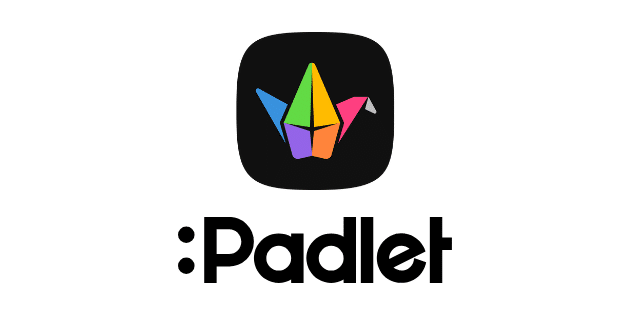
by California Casualty | Educators |
For many of us, Padlet* has become one of the “go-to” resources for virtual learning. This online bulletin board is an easy way to engage students, encourage collaboration, and inspire meaningful learning. If you haven’t yet used this digital tool, check out our “Don’t Know Padlet?” section below. If you’re a Padlet “pro,” jump right into the tips and tricks to take your virtual classroom to the next level.
Don’t know Padlet?
Padlet is an online space where you can post content for your students, and where they can post content for you and their classmates. Content can include text, audio, video, documents, spreadsheets, and more. Padlet is easy to use, even for young students, and it works on computers, laptops, Chromebooks, iPads, and smartphones. The free version allows you to create up to three Padlet boards at a time. A paid account is currently $8 a month for individuals; there’s bulk pricing for schools. Best of all, you don’t have to reinvent the wheel. You can copy other teachers’ Padlet pages to your account.
Default settings you may want to adjust
-
- The default setting is for post attribution to be turned off. In most cases, you want to know who posted. Turn on post attribution so you can see student names. Students need to sign in to create free Padlet accounts so their names will be included.
- Turn on the comments. This allows students to communicate with each other. But turn off the reactions. While it might be nice to get likes and stars, students could get competitive.
- Require approval before something gets posted. Enough said.
- Change the privacy setting to secret. Private means only you can see it. Secret allows anyone linked to the Padlet to view it.
“Pro” Tips and Tricks
Following are some proven ways that educators are using Padlet to teach everything from core subjects to the skills that will help students become better at gathering, reviewing, and analyzing information.
1. Graphic organizers
Displaying information so that it’s easy to access is a strength of Padlet. Make an interactive map with your students to explore parts of the world. Incorporate images, video, and music. Create a timeline for history class, literature study, or current events. You also can upload some of your favorite backgrounds to Padlet and display Venn diagrams and KWL charts where students may collaborate.
2. Live question bank
Whether you’re teaching virtually or also teaching in the classroom, you can open up a Padlet wall to take questions during the lesson. You can either answer the questions as they are posted, or take a break in the middle or near the end of the lesson to respond.
3. Class podcast
Turn your next unit topic into a class podcast on Padlet. Not only will students need to research and learn about the topic, but they will also need to present it. The entire unit can be organized on Padlet with subtopics, photos, video, and text. Everyone will cover the full topic but the final product will be an oral presentation where each student covers one aspect—so that the total presentation is a podcast.
4. Class debate
Pose a question and ask students to take sides—or assign them one. Their job is to gather content to support their side. Encourage dialogue and model how to have respectful conversations online about topics where they may disagree.
5. Book group
For classes reading the same book or story, Padlet offers a wonderful way to unpack the setting, characters, and plot. Have students post photos that depict the setting with text describing it. Discuss character and plot development via timelines, and invite students to submit drawings or GIFs to make it more exciting for them. Ask students to write book reviews as a cumulative activity.
6. Note-taking
Note-taking is an important skill that will help students as they continue their educational journey. Model how to take notes on Padlet by taping your own video tutorial that students may watch. Allow students to work together to add notes to a Padlet wall from a lesson that you teach. Review and color code the content that could appear on a quiz.
7. Beginnings and endings
Use Padlet as a bellringer activity as students enter the classroom. What do they remember from yesterday’s lesson? Ask them to respond to an image or quote. You also could use this type of quick response as an Exit Ticket. 3…2…1: What are 3 things you learned in the lesson? What are 2 questions you would put on a quiz? Answer one of those 2 questions.
8. Help needed
You can use Padlet to see who needs help during independent work. Set up a Padlet wall specifically for students to ask for help. Set it to the linear feature so you can easily see who is listed and in what order. Not only can students add their names to the list but they can see how many are ahead of them. Padlet also can be used to troubleshoot something that is not working online for a student. Ask him or her to upload a screenshot via Padlet and you can guide the student appropriately.
Do you have another way to use Padlet in the classroom? Share your ideas with fellow educators in the comments!
*Disclaimer: California Casualty is not in affiliation with and does not own any rights to Padlet. For more information on Padlet please visit their website at www.padlet.com
This article is furnished by California Casualty, providing auto and home insurance to educators, law enforcement officers, firefighters, and nurses. Get a quote at 1.866.704.8614 or www.calcas.com.
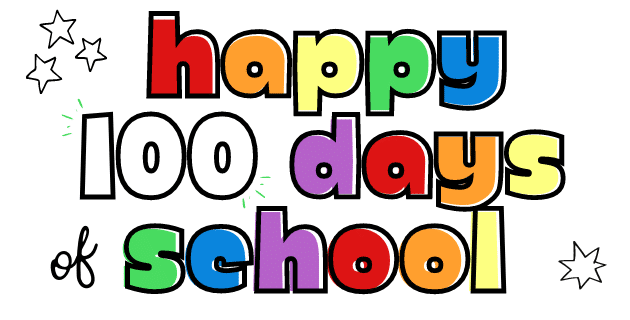
by California Casualty | Educators |
Teachers and students alike have been working hard all year long and they’ve finally reached 100 days together in the classroom. It’s time to celebrate this milestone!
Here are some fun activities you can do in your classroom when you reach 100 days of school.

1. Make 100 Days of School Shirts
Celebrate 100 days of school by having your whole class sport 100 day shirts! Here’s how it’s done- have each student bring in a plain t-shirt (or an old shirt that they don’t wear anymore), purchase or have kids bring in easy supplies like bandaids, googly eyes, puffballs, beads, yarn, stickers, etc., and let kids go to work on creating their shirt. The only rule is that whatever they are using- they need to use 100 of them for their shirt to be complete!
For virtual students: Have each child make their own shirt during class one day together, and then show them off on-screen by wearing them together on the 100th day.
Pro Tip: If you don’t want to purchase extra supplies, just use markers or paint and have each child draw their design!
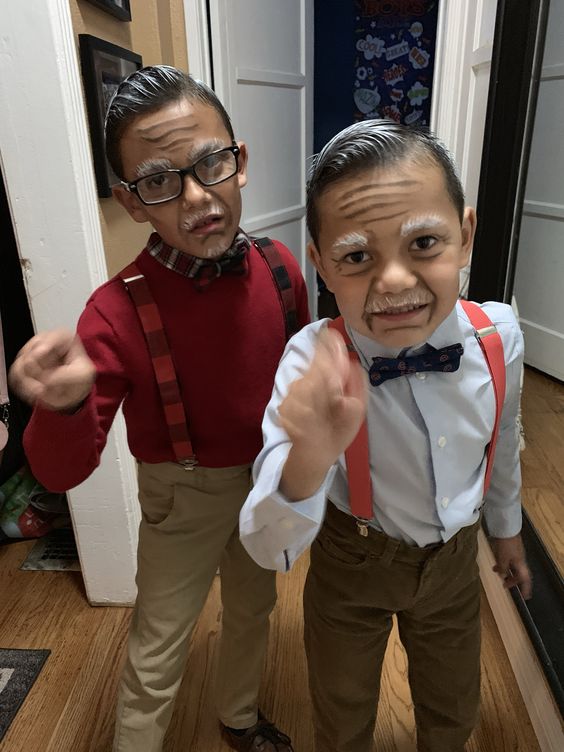
2. Dress Up as 100-Year-Olds
Want to do something a little more silly that your class (and fellow teachers) are sure to enjoy? Host a 100-Year-Old dress-up contest! Students can come to school dressed in their best 100-year-old costume. To make it even more exciting, host a contest with a prize for the “oldest” looking student. Who wouldn’t want a few miniature Golden Girls running around their elementary school all day?
For virtual students: Have each student dress up and show off their look on camera and host a virtual contest on who looked the oldest.
3. Play a Game!
There are hundreds of game options that you can play with your students to celebrate 100 days! If you want to keep it educational you can try playing one of these:
Roll to 100 Dice Game
Number Scavenger Hunt
100 day M&M Sort & Graph
Guess the Jar – What 100 Items Looks Like
For virtual students: Send worksheets via email and have them color in digitally or print out at home. Click here for a free online dice roller.
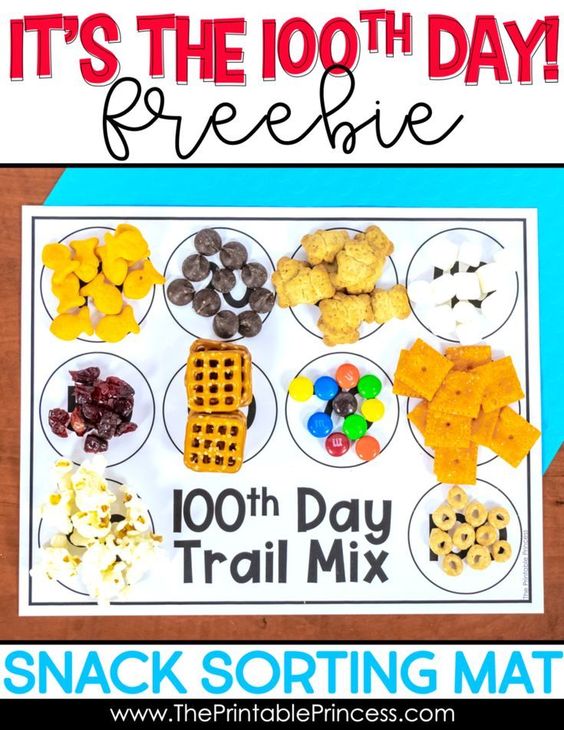
4. Make the Day a Little Sweeter
If your school lets you have snacks in the classroom, try some of these fun activities to help make the 100th day a little tastier! If your COVID protocols forbid eating snacks in the classroom you could always try these activities with individually wrapped candy like Tootsie Rolls, Hershey’s Kisses, mini candy bars, suckers, Laffy Taffy, etc and have kids wait until they get home to eat them. OR use other objects in their place like beads.
Make 100th Day Trail Mix
Create a 100 Days of School Edible Necklace
100 Day Snack Sort
If you can have snacks, you should definitely try having your kids do this Tootsie Pop experiment!
For virtual students: You can let parents know ahead of time what projects that you plan to do and the supplies your students will need, or you can have students count out food objects (or any object) they already have at home to sort.
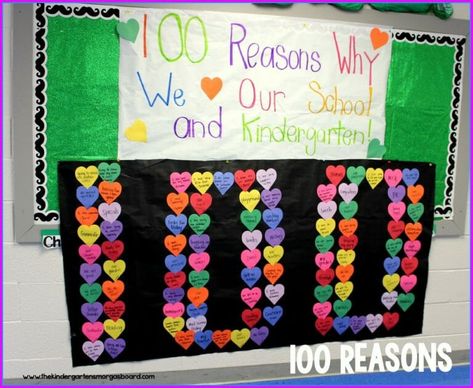
5. Decorate Your Classroom
A fun activity and a bright addition to your classroom, having your students help create 100-day decor for doorways and bulletin boards will not only help you out when it comes to thinking of new ideas, but it will also help show off your student’s love for your school! Or if you want to surprise your students when they walk into the room on the 100th day with special decorations click here for ideas.
For virtual students: Have each student make a virtual background celebrating 100 days of school. They can create a photo of their favorite lesson so far or write what they have loved the most about their school year. The best part is, is that you can have them create whatever you would like to celebrate!
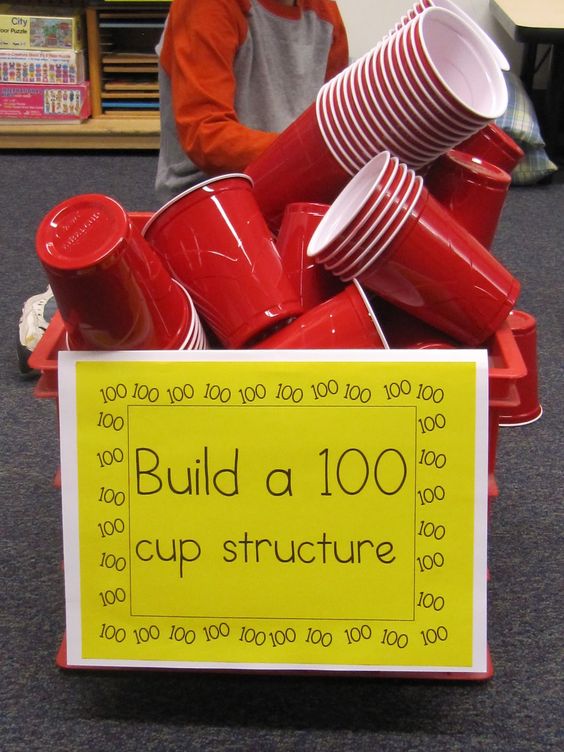
6. Get Up and Get Moving with STEAM!
Get your students out of their seats and having fun with these fun activities that require them to build using their STEAM skills. You could even set them up in stations where students have to go and complete each activity:
Build a 100 Cup Structure
Create a City with 100 Legos
Make a Self Portrait with 100 Paper Clips
For virtual students: Have your students take pieces of paper and cut them to where they have 100 pieces, and then have them create a self-portrait using the blocks. Each student can then take a photo of their creation and show them off to their classmates.

7. 100 Items
Have each student bring 100 items from home that they can show off to their peers! This is the perfect chance for students who collect objects like action figures or sports cards to show off their hobbies. Students can even vote for their favorite item and the best one can win a prize. Just be sure to send home a note to parents beforehand letting them know your plan and size limitations. No one wants 100 goldfish bowls brought into their classroom…
For virtual students: The rules can stay the same, just do your show and tell virtually.

8. Take it Easy with a Good Book
Finish off your 100-day celebrations by reading a book (or books) together as a class that features the number ‘100’. Check out our favorites here.
For virtual students: Hold your reading virtually.
Happy 100 Days! Keeping pushing, you are almost done 🙂
And for more 100 Days of School classroom celebration ideas check out our Pinterest Board “Teachers Celebrate 100 Days of School”.
This article is furnished by California Casualty, providing auto and home insurance to educators, law enforcement officers, firefighters, and nurses. Get a quote at 1.866.704.8614 or www.calcas.com.

by California Casualty | Educators |
It’s hard to learn when you’re cold. It’s also hard to teach. Unfortunately, many of our nation’s schools are older and that means they are likely full of drafty windows and outdated heating systems. And when the temperatures drop, your classroom is colder than anyone wants.
Fortunately, there’s something you can do about it. Take steps to keep your classroom and your students a bit warmer this winter.
How warm should your classroom be?
If a classroom is too warm, it can raise your body temperature. This can make you feel sick, dizzy, and disoriented. If the classroom is too cold, it can cause you to lose focus as your mind constantly interrupts you with thoughts about the discomfort. The effects on learning are real, too.
Temperatures that are too high or low contribute to lower test scores, decrease in memory, and lack of energy. The ideal temperature for learning is between 68-75 degrees, according to the Regional Educational Laboratory Program of the Institute of Education Sciences.
If your classroom temperature falls below 68 degrees, it’s time to take action. Here’s what you can do.
Dress in layers.
Both you and your students can suit up for the cold. Follow these guidelines for the best way to layer your clothing.
-
- The inner layer is meant to keep moisture away from your skin so that your body doesn’t cool down due to sweat. Choose wool, synthetic, or silk but not cotton as it won’t do the job.
- The middle layer should be a light insulating layer. Wool or synthetics work here.
- The outer layer is the insulating layer designed to trap heat. Wool and nylon/polyester work well.
- Avoid tight-fitting clothing, including socks. Any clothing that reduces normal blood circulation to your arms and legs will actually make you feel colder.
Wear hats, scarves, gloves, and socks.
Teaching in a coat is bulky and uncomfortable. However, adding some of your winter accessories can bring warmth without the bulk.
-
- Since 7-10% of heat is lost via our head, wearing a hat can help. Just make sure that your school doesn’t have a rule against hats, and that the ones chosen aren’t distracting from learning.
- Scarves immediately make you feel warmer. Winter scarves and fashion scarves both work; just make sure that they fully cover your exposed neck.
- Gloves can be worn while teaching and learning. Students can keep their fingers warm when reading or doing activities that don’t involve writing.
- Keep your feet warm. Wool socks are great choices for extra warmth. Most of the time, wearing double socks just makes your shoes feel tight. Take a tip from the Tour de France cyclists and fold a paper towel or napkin over the top of your foot, toes, and under your toes. Then put on your shoe. It will give you extra warmth.
Use hand warmers, foot warmers, and blankets
Get creative with ways you and your students can keep warm!
-
- Keep disposable hand and foot warmers on hand. They are air-activated and last for hours.
- You can also use reusable and rechargeable hand or foot warmers. There are some great options for kids, too.
- Buy cheap blankets at the dollar store or Walmart or have students bring their own to keep in your classroom in case they get cold. Get enough so each student can have his/her own. And keep them year after year (just don’t forget to wash them). These can also come in handy during storytimes!
Get moving.
Moving circulates your blood which makes you feel warmer. It has the added benefit of engaging students.
-
- Incorporate movement into your lesson plans and your routines. Have students respond to multiple-choice questions by standing on one leg, rubbing their hands together, or stretching toward the ceiling. Give a quiz where questions are posted around the room.
- Take a learning break and do jumping jacks, GoNoodle Movement videos, etc.
-
- Bundle up and take your class outside for a few minutes. Not only will running around help them warm-up, but when you come back in, the classroom will feel warmer.
- Remember to close your classroom door to keep in the heat.
Choose foods and beverages that help you stay warm.
Healthy fatty foods provide the energy that keeps you warm. Similarly, hot beverages add that much-needed comfort.
-
- Nuts and dark chocolate are great choices for healthy fatty foods that are easily portable to the classroom.
- Sipping on a thermos filled with soup also can help you concentrate in a cold classroom.
- Drink hot beverages, such as tea or coffee. Ginger tea is known for producing heat in our bodies. The caffeine in coffee increases your metabolism which can raise body temperature. Plus holding tea or coffee in your hands feels wonderfully warm.
- Drink water. When you’re dehydrated, your core temperature can drop. Staying hydrated helps you regulate your temperature.
Finally, remember that we all need a little motivation after winter break. Concentrate on the moment, think warm thoughts, and take in the enjoyment of teaching. Those happy feelings will help you and your students forget the cold… at least momentarily.
Coats for Kids – the Gift of Warmth
California Casualty supports Coats for Kids, a program that donates new winter coats to children in need. Coats for Kids was established by the Professional Fire Fighters of Utah to combat one of the most fundamental hardships of childhood poverty, the absence of a warm winter coat. We applaud all of you who make the extra effort to keep our most vulnerable children safe, warm, and healthy.
This article is furnished by California Casualty, providing auto and home insurance to educators, law enforcement officers, firefighters, and nurses. Get a quote at 1.866.704.8614 or www.calcas.com.












